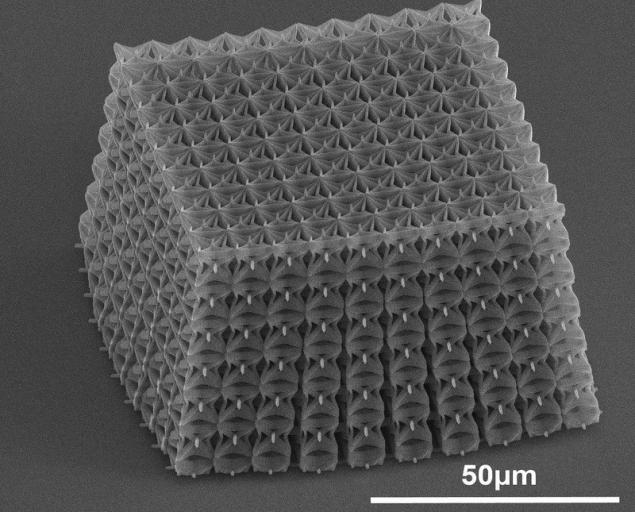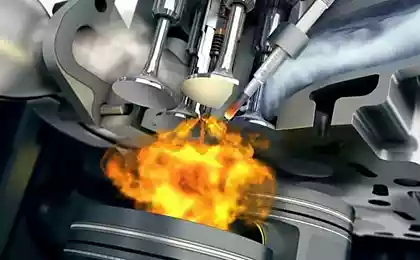356
Engineers have created plastic ceramics
Scientists at Caltech have demonstrated a unique ceramic structure that can withstand a strong grip.

Ultra-thin frame allows ceramics to be plastic and to recover its shape after removing the load. Such brittle materials usually contain a tiny defect: small cracks or holes that lead to the formation of cracks under pressure. To solve this problem, researchers have created a tiny grid of superthin ceramic tubes with a wall thickness of from 5 to 60 nanometers. This thinness leaves little room for defects.

Stress tests showed that some of the lattices with tube walls 10 nanometre thick return more than 95 percent of their original height after compression more than 50%. When the researchers made a lattice of tubes with a wall thickness of 60 nanometers, they behaved like ordinary fragile material and were crushed into dust.
Scientist the max Planck Institute Peter Fratzl delighted: "This, for ceramics, is unheard of. Such materials are typically brittle and can break." Materialoved from France Sylvain Deville says that ceramic breaks after 1% compression, so 50% is really enormous. Fratzl added: "Elastic ceramics is a Holy Grail in material science, because of the subtleties, they have achieved a very unusual effect."
Source: nauka24news.ru/

Ultra-thin frame allows ceramics to be plastic and to recover its shape after removing the load. Such brittle materials usually contain a tiny defect: small cracks or holes that lead to the formation of cracks under pressure. To solve this problem, researchers have created a tiny grid of superthin ceramic tubes with a wall thickness of from 5 to 60 nanometers. This thinness leaves little room for defects.

Stress tests showed that some of the lattices with tube walls 10 nanometre thick return more than 95 percent of their original height after compression more than 50%. When the researchers made a lattice of tubes with a wall thickness of 60 nanometers, they behaved like ordinary fragile material and were crushed into dust.
Scientist the max Planck Institute Peter Fratzl delighted: "This, for ceramics, is unheard of. Such materials are typically brittle and can break." Materialoved from France Sylvain Deville says that ceramic breaks after 1% compression, so 50% is really enormous. Fratzl added: "Elastic ceramics is a Holy Grail in material science, because of the subtleties, they have achieved a very unusual effect."
Source: nauka24news.ru/
Scientists have found creatures that do not fit into the modern classification of
6 Secrets of Gesticulating Successful People























